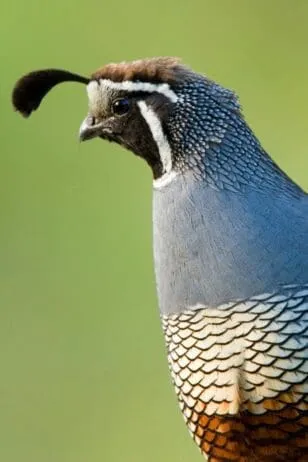Tarantulas at Pinnacles National Park Facts
Pinnacles National Park, with its unique geological formations and diverse ecosystems, is a haven for a variety of wildlife, including the fascinating tarantula. These large, hairy spiders are a sight to behold and a significant part of the park’s biodiversity. Understanding these creatures, their habits, and where to find them can greatly enhance your Pinnacles experience. This guide will delve into seven key facts about tarantulas at Pinnacles, providing insights into their lives and how you can safely observe them in their natural habitat. Whether you’re a seasoned naturalist or a curious visitor, this guide will equip you with the knowledge to appreciate these impressive arachnids.
What are Tarantulas?
Tarantulas are large, hairy spiders belonging to the Theraphosidae family. They are known for their impressive size, often with leg spans reaching several inches. Unlike many other spiders, tarantulas are not considered aggressive and rarely bite unless provoked. They are primarily nocturnal hunters, using their fangs to inject venom into their prey. These spiders are generally slow-moving and can live for several years, with females often outliving males. Their presence is an indicator of a healthy ecosystem, making their observation a rewarding experience for any nature enthusiast. They play a crucial role in controlling insect populations within their habitat.
Appearance of Tarantulas

Tarantulas have a distinct appearance that sets them apart. Their bodies are covered in fine hairs, with a range of colors from brown to black, providing effective camouflage. The size of a tarantula is a noticeable feature, with some species reaching up to 10 inches in leg span. They have eight eyes arranged in a pattern on their cephalothorax, and strong chelicerae (fangs) for capturing prey. These spiders also possess spinnerets at the end of their abdomen, which they use to produce silk for creating burrows and wrapping prey. The overall appearance is designed for a terrestrial life, with strong legs built for digging and climbing.
Where to Find Tarantulas at Pinnacles National Park
Pinnacles National Park offers several locations where tarantulas can be spotted, particularly during their mating season in the fall. The best places to look are along the hiking trails, especially those that traverse chaparral and oak woodland habitats. Look for burrows, which are often indicated by a small opening in the ground surrounded by silk. Areas with rocky terrain and moderate vegetation are also prime locations. Popular trails such as the Condor Gulch Trail and the High Peaks Trail may offer opportunities for tarantula sightings. Remember to observe from a distance and avoid disturbing the spiders or their habitats, ensuring their safety and yours.
Tarantula Habitats
Tarantulas at Pinnacles National Park primarily inhabit burrows in the ground, which they dig themselves or occupy abandoned rodent burrows. These burrows provide shelter from the sun, protection from predators, and a stable environment for temperature regulation. The tarantula’s habitat is typically found in areas with well-drained soil and adequate cover, such as under rocks or within dense vegetation. They prefer environments with a moderate humidity level. Understanding their habitat preferences can increase your chances of spotting these fascinating creatures. Keeping an eye out for these burrows along trails allows for respectful and educational wildlife observation.
Best Time to Spot Tarantulas

The best time to see tarantulas at Pinnacles National Park is during their mating season, which typically occurs in late summer and fall, usually from September to November. During this period, male tarantulas become more active as they search for mates, increasing the likelihood of sightings. The early mornings and late afternoons are the optimal times for observing tarantulas, as they are most active during these cooler periods. While hiking, keep your eyes open along trails, especially those that offer good views of the surrounding terrain. The warmer months may also increase the chance of seeing them, but always prioritize the safety of the spiders and yourself.
Tarantula Behavior and Diet
Tarantulas are primarily nocturnal hunters, spending the daylight hours in their burrows. They are ambush predators, waiting for unsuspecting prey to come within striking distance. Their diet consists mainly of insects, such as crickets and beetles, but they can also consume small lizards and other spiders. Male tarantulas become more mobile during the mating season, seeking out females. After mating, the males often face the risk of being eaten by the females. This behavior highlights the complex life cycle and ecological role of tarantulas. Observing these behaviors requires patience and a respectful distance.
Hunting Techniques
Tarantulas use a variety of hunting techniques to secure their meals. They primarily rely on their keen sense of vibration and the fine hairs on their legs to detect the movement of potential prey. Once an insect or other small animal comes within range, the tarantula quickly pounces, using its fangs to inject venom. The venom paralyzes the prey and begins the process of pre-digestion. They then use their chelicerae to crush the insect and suck out the liquefied insides. This process demonstrates their efficiency as predators and their importance in the ecosystem. Understanding these hunting behaviors will add to the enjoyment of viewing these animals.
The Tarantula Mating Ritual

The mating ritual of tarantulas is a fascinating display of instinct and survival. During the mating season, male tarantulas leave their burrows to find a mate. They use silk to create a sperm web and deposit their sperm onto it. The males then pick up the sperm with their pedipalps (small appendages near their mouth) and search for a receptive female. The male approaches the female cautiously, tapping on her web to indicate his presence. If the female is receptive, the mating process begins. It’s crucial to observe from a safe distance and respect their natural behavior. The courtship includes elaborate displays, such as vibrating their legs, before the physical mating takes place, followed by the male retreating to avoid being eaten. This display is a crucial part of the tarantula’s life cycle.
Tarantula Life Cycle
The tarantula life cycle is a complex process that spans several years. Tarantulas start as eggs laid in a silk egg sac by the female. The young spiders, or spiderlings, hatch and go through several molting phases as they grow. During molting, they shed their exoskeleton, which allows them to increase in size. The growth of a tarantula depends on several factors, including the environment and food availability. Females can live for many years, sometimes over 20, while males usually have shorter lifespans, often only living for a few months after maturity. This life cycle contributes to the tarantula’s role within the ecosystem.
Tarantula Conservation and Safety Tips
Conservation of tarantulas is vital for maintaining the balance of the ecosystem. It’s important to avoid disturbing their habitats by staying on marked trails and refraining from touching or handling them. When observing tarantulas, maintain a safe distance to avoid startling or agitating them. Educating yourself about their behavior and respecting their space contributes to their conservation. Visitors to Pinnacles National Park can help by following these safety tips, reporting any unusual sightings, and supporting initiatives aimed at preserving their natural environment. Safety is paramount; therefore, caution and awareness are always necessary when encountering tarantulas.
How to Observe Tarantulas Safely

To observe tarantulas safely, it is essential to keep a respectful distance. Use binoculars or a telephoto lens to get a closer look without approaching them. Avoid sudden movements or loud noises, as these may startle the spiders. Be cautious when walking near burrows, and always watch where you step to prevent accidental damage to their habitat. Educate yourself about the local species to understand their behavior and potential dangers. Follow park guidelines and regulations, and never attempt to handle or provoke a tarantula. Enjoying the natural beauty of these animals safely requires patience, respect, and a commitment to their well-being.
Tarantula Conservation Efforts
Several conservation efforts are in place to protect tarantulas and their habitats at Pinnacles National Park. These include habitat preservation, educational programs, and scientific research. Park rangers and volunteers actively monitor tarantula populations and educate visitors about their importance in the ecosystem. Citizen science initiatives may provide opportunities for participating in monitoring and conservation efforts. Supporting the park through donations or volunteering can also help ensure the continued protection of tarantulas and their habitat. These endeavors guarantee that future generations can experience the wonder of seeing these impressive arachnids in their natural environment.
Conclusion
Tarantulas at Pinnacles National Park are a fascinating aspect of the park’s biodiversity. Their presence indicates a healthy ecosystem, and observing them offers a unique connection with nature. By understanding their behavior, habitat, and the best times for spotting them, visitors can enhance their park experience while supporting their conservation. Remember to always observe from a distance, respect their environment, and appreciate the role tarantulas play in the natural world. With awareness and caution, you can safely enjoy the remarkable sight of tarantulas thriving in Pinnacles National Park.
